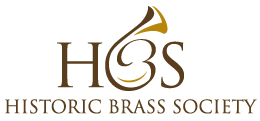University of Kentucky Baroque Trumpet Ensemble. A New and Compleat Preceptor for the Trumpet and Bugle Horn by J. Hyde (1799). dir. Jason Dovel. Sontius Records SR 004, recorded Summer 2020. Available on iTunes
Friedrich Anzenberger (HBSJ 1993) noted in the first of his series of articles on trumpet methods that this is the first English method book for trumpet and bugle to be published. Jason Dovel and the fine trumpeters of the University of Kentucky Baroque Trumpet Ensemble have done the brass community a great service by recording all the music from this important fifty-page method. There is some question as to whether Hyde’s first name was John or James. The title page of the method says the music was composed and compiled by J. Hyde and lists his affiliation as “of the Opera House and Trumpet Major to the Gentlemen of the London & Westminster Light Horse Volunteers. Of course, today Hyde is most remembered for the invention of the English slide trumpet. The title page also indicates that the Cavalry Duty and Signals are “approved of and ordered by his Royal Highness the Duke of York, Commander in Chief.”
True to the history and culture of the trumpet, much of the material concerns military music and various trumpet and bugle calls. Anzenberger also notes that this method, as with other early English sources, writes for the trumpet not as a transposing instrument but rather as it sounds. The music, considering the limitations of the natural trumpet, surprisingly holds ones attention. The range spans from G below middle C up to the thirteenth partial (a 2). There is one fascinating exception which is in the Setting the Watch call where the line, written in bass clef, plunges down to G then down to C, two octaves below middle C1! Dovel chose to play those notes an octave higher than written. That seems to be a sensible choice. Trying to play a C two octaves below middle C might be technically possible but rather unlikely given that this is a military call to be played outdoors. Another interesting tidbit is number 6 in the set of Marches and Quick Steps for three trumpets: it is the March from Mozart’s Marriage of Figaro. Hyde does not attribute this piece to Mozart and the section title says, “Marches and Quick Steps for three trumpets arranged and composed by J. Hyde.” However, number 6 is clearly Mozart. The Mozart opera was composed in 1786, a mere thirteen years before the publication of the trumpet method.
There are various musical categories in the method including marches and quicksteps for three trumpets, calls for three and two trumpets and bugles, many signals for a single instrument—reveille, stable call, boots and saddles, dinner call, and so forth—plus duets for trumpet and bugle and even some popular tunes such as Drink to Me Only with Thine Eyes (two trumpets) and How Great is the Pleasure (three trumpets), both of which Anzenberger indicates are for slide trumpet. The Kentucky musicians played those two tunes on regular natural trumpets pitched in Baroque D and lipped the non-harmonic tones. They employed low Baroque pitch whether using trumpets in C or trumpets in D. It is interesting that some pieces are written for bugle and others for trumpet but, their style and range are indistinguishable. This recording uses natural trumpets, some pieces vented and others non-vented. A cursory examination of the military calls in the Fantini method (1638) and the Bendinelli (1614) don’t show any similarities. A closer look at the calls in early trumpet methods to find similarities might make an interesting study.
Jason Dovel and the members of his excellent ensemble perform this music with great spirit and precision and making use of some of Hyde’s suggestions for articulation. They choose some brisk tempi, and many of the pieces are not easy, featuring skips, rhythmic complexities such as triplets over straight eighth notes, and feats of considerable endurance, and their ensemble playing is first-rate throughout.
Of course, this recording is not intended as a typical art-music performance. A Beethoven symphony it’s not. These old musical sources inform us about long-lost musical and other cultural traditions, and recordings like this help us to comprehend those traditions more vividly than the printed page can. Jason Dovel has informed me that one of his graduate students is planning to create a modern edition of this method. Given the limited availability of copies of the original edition, a modern edition along with this wonderful CD would be most welcome.
-- Jeff Nussbaum
Note: Hyde’s original publication can be downloaded at https://babel.hathitrust.org/cgi/pt?id=uc1.aa0001358308.



